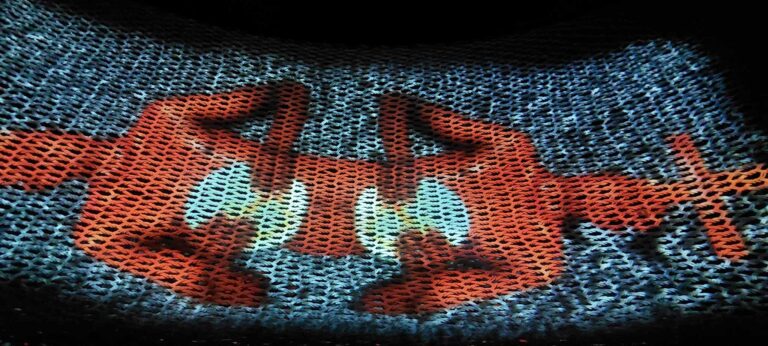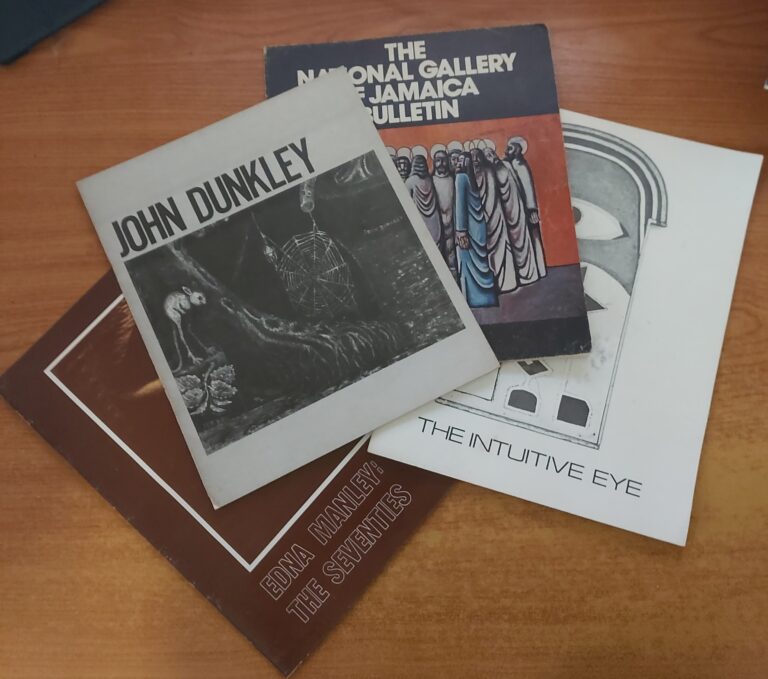Le Centre d’Art in Port-au-Prince, Haiti – Part 2

Last week, we looked at the early history of Le Centre d’Art, an influential Haitian art organization which was established in 1944. Its building, a Gingerbread-style mansion which dated from 1912, collapsed in the catastrophic 2010 Port-au-Prince earthquake and had to be demolished. Significant damage was also incurred to the collection, which consists of about 5,000 works of art, along with important archival material. As a result, programmes also had to be halted.
What could have been the end of Le Centre d’Art however became the beginning of an exciting new phase in its history. The revival of Le Centre d’Art has been supported by committed individuals and organizations such as the Daniel and Nina Carasso Foundation, a French philanthropist, and FOKAL, a major Haitian NGO which offers grants and programmes in the fields of education, community development, heritage, and the arts, and which supports several cultural organizations in Haiti. FOKAL is a part of the Open Society Foundations network. Le Centre d’Art reopened in November 2014, as part of the organization’s 70th anniversary celebrations, in temporary facilities that consist of semi-open wooden pavilions and, for the collections and archives, air-conditioned container structures. (For the sake of disclosure, I am a member of the Technical and Scientific Committee of Le Centre d’Art.)
As its website states, Le Centre d’Art “remains faithful to its original mission and continues to improve it in order to adapt to contemporary issues”, by offering training and mentoring, as well as fostering the local and international exposure of Haitian art. The programmes include: an ambitious conservation and collections management project, aided by the Smithsonian and the Louvre; an active and diverse programme of courses and workshops for adult and young audiences; artist’s residency programmes; research facilities and publications; and various art events and exhibitions (which include sales exhibitions).
Le Centre d’Art has recently taken custody of the collection of the Musée d’Art Haitien du College St Pierre, which had been in jeopardy since the 2010 earthquake. Le Centre d’Art’s had played an important role in the establishment of this museum, which opened its doors in 1972 and included some of the most iconic works from the early Le Centre d’Art collection. This collection has now been included in Le Centre d’Art’s conservation programme. The programme has also, and again, become more engaged with the broader Caribbean. This includes a UNESCO funded exchange residency for female artists, whereby Haitian artists go to the Dominican Republic, Barbados, Trinidad and Tobago and Jamaica, and artists from those countries visit Le Centre d’art, with a collective exhibition at the end. Le Centre d’Art, presently, also serves as the incubator for the Caribbean Culture Fund, that will provide arts’ funding throughout the region.
Since reopening, Le Centre d’Art has staged several memorable exhibitions, such as the Jasmin Joseph exhibition in 2016, which featured the work of one of the earlier members; the Tessa Mars Manman Zile solo exhibition in 2019 which featured one of the most exciting young Caribbean artists of the moment; and the Rèl group exhibition of work earlier in 2021, in which self-taught and formally trained contemporary artists exhibited together seamlessly to give a very energetic and innovative voice to the troubled present moment, but without held back by the old, contested hierarchies in Haitian art. Most of these exhibitions have been held, and were exemplarily designed and installed, at the nearby Maison Dufort, a Gingerbread mansion from 1910 which was restored by FOKAL. The Maison Dufort offers beautiful, well-appointed spaces for exhibitions and cultural events, and it is a well-utilized asset by the cultural community of Haiti. The preservation of Haiti’s Gingerbread architecture, of which the storied Oloffson Hotel (the setting of Graham Greene’s 1966 novel The Comedians) is another well-known example, is a story well worth telling and will be the subject of a future column.

I must admit that I am rather fond of the current pavilion architecture of Le Centre d’Art. It integrates the green space of the large garden with the studio, classroom, work, technical, and event areas, and its openness signal an inclusive, environmentally sustainable, and non-hierarchical creative environment in which all types of art, artists and audiences are made to feel welcome – there are lessons to be learnt there about the importance of architectural symbolism. The current location and facilities are not sustainable in the long run, however, and much too small, and Le Centre d’Art is slated to move to the Maison Larsen, which sustained relatively minor, repairable damage in the 2010 earthquake.
Also in the Gingerbread style, the stately Larsen Mansion is larger than the original Centre d’Art building and located on a hillside. With two major floors, a large basement, expansive indoor spaces, multiple terraces, lush gardens, and stunning views of Port-au-Prince, the building has tremendous potential to support Le Centre d’Art’s current path of growth and will, among other things, allow for the permanent display of sections of the permanent collection. Work towards the rehabilitation of the building, which involves an architectural competition, has been somewhat delayed by the political unrest in Haiti and the pandemic but is now again moving forward and, all being well, Le Centre d’Art should be able to relocate to its new home in 2022.
While there is no doubt that the Haitian art world will always be couched in Haiti’s fractured social hierarchies, the old artistic hierarchies, labels, and politics of patronage and representation no longer seem to matter as much as they did in the late 1940s. The work of the renewed Le Centre d’Art, which is exemplarily receptive to the different directions in Haitian art, is representative of that shift. Other initiatives, such as the Atis Resistanz collective that organizes the already famous Ghetto Biennial, are also crucial parts of Haiti’s unique and dynamic contemporary art scene which illustrates that art and creativity can, and indeed must flourish under challenging circumstances, whether these be natural or political disasters, and in ways that are socially empowering and transformative.
Dr Veerle Poupeye is an art historian specialized in art from the Caribbean. She lectures at the Edna Manley College of the Visual and Performing Arts in Kingston, Jamaica, and works as an independent curator, writer, researcher, and cultural consultant. Her personal blog can be found at veerlepoupeye.com.






